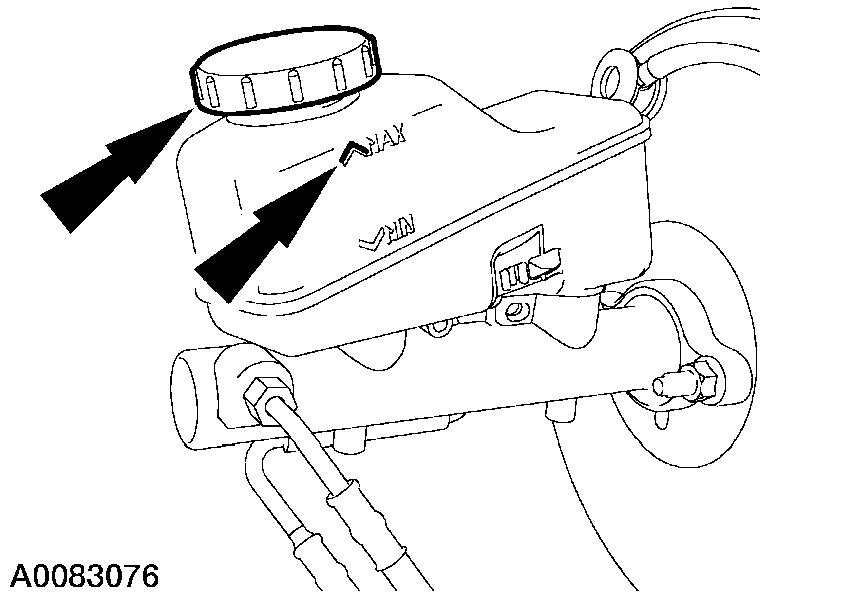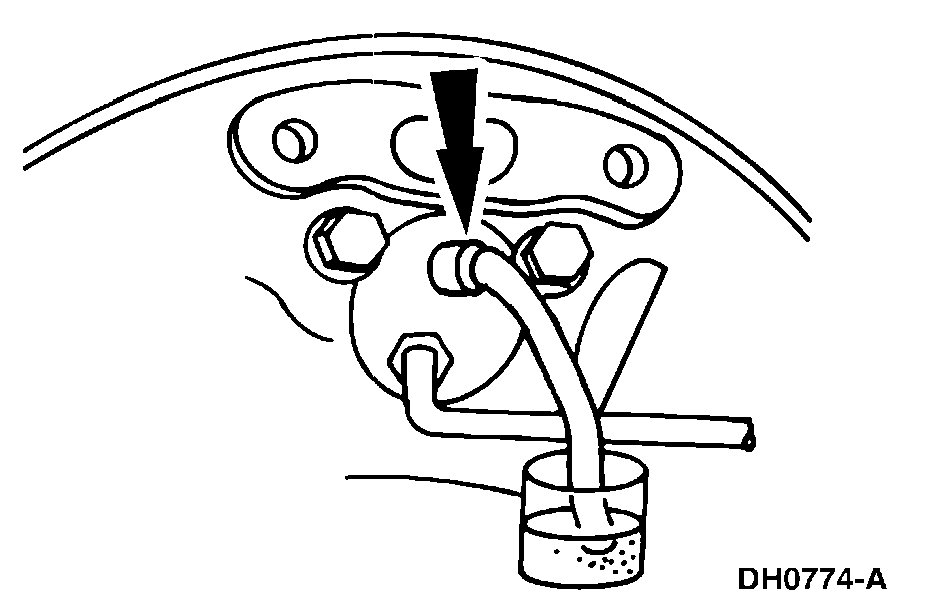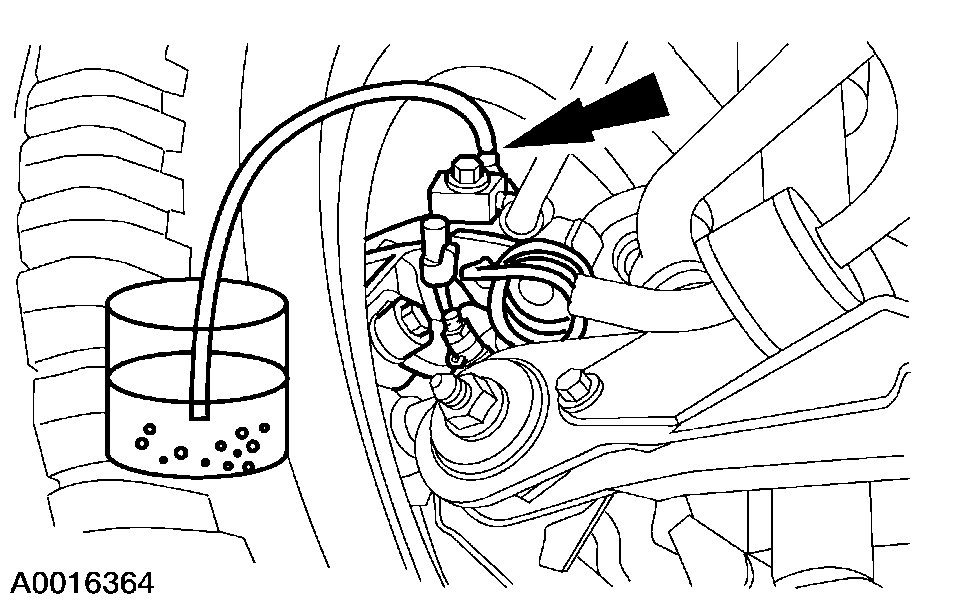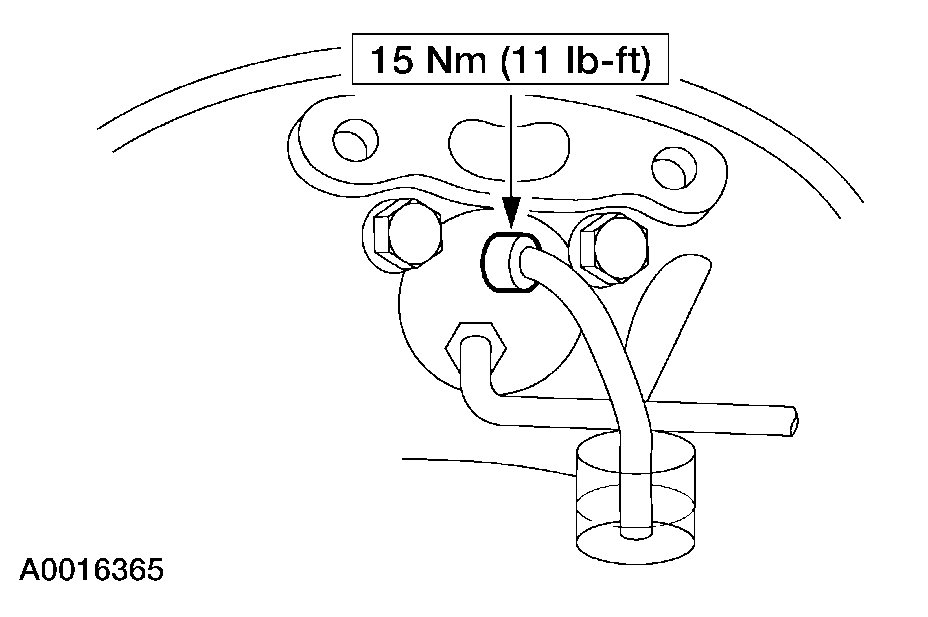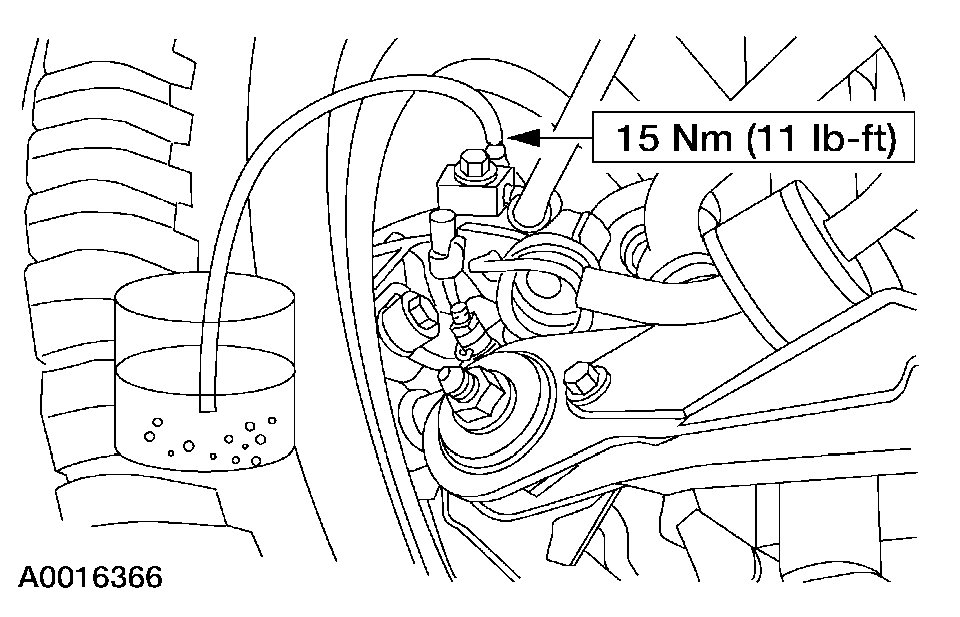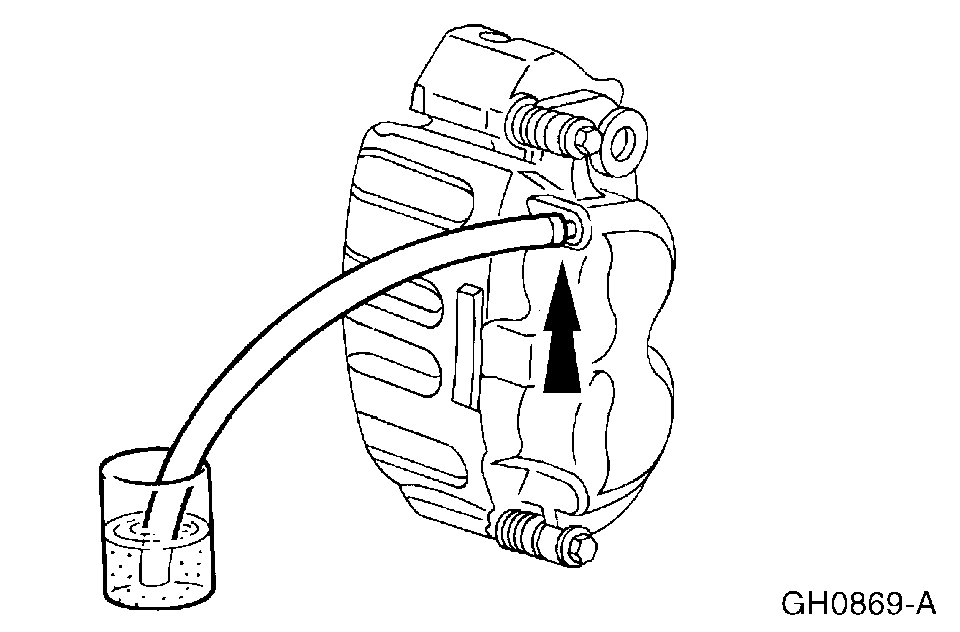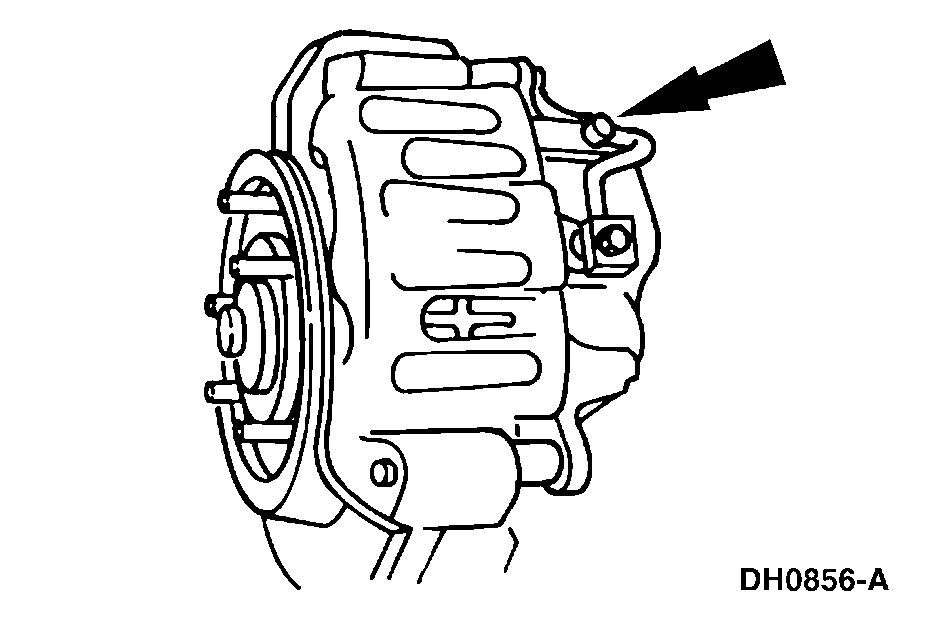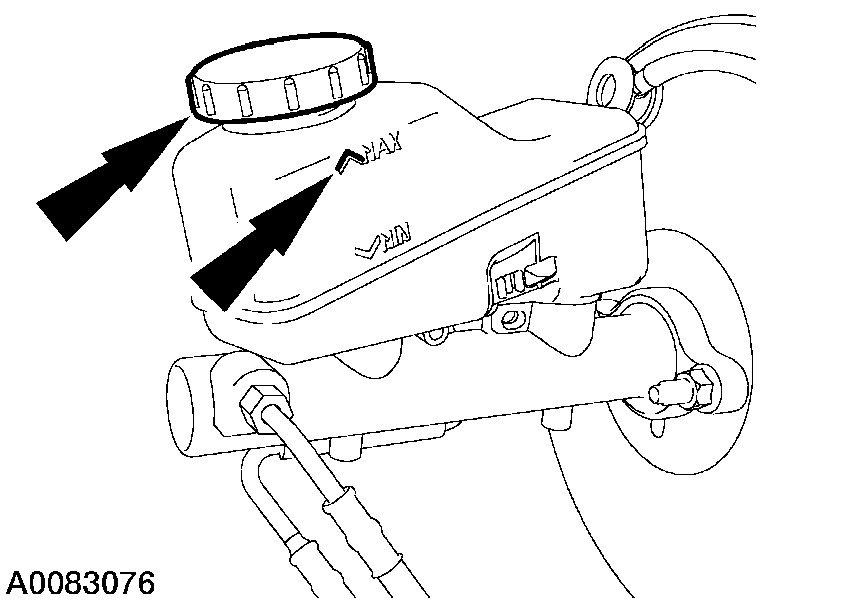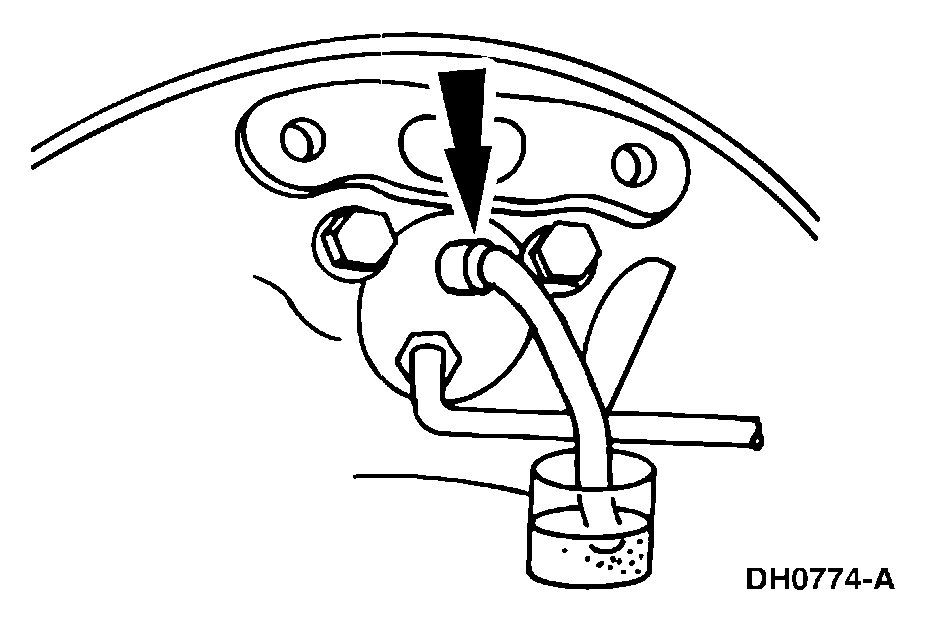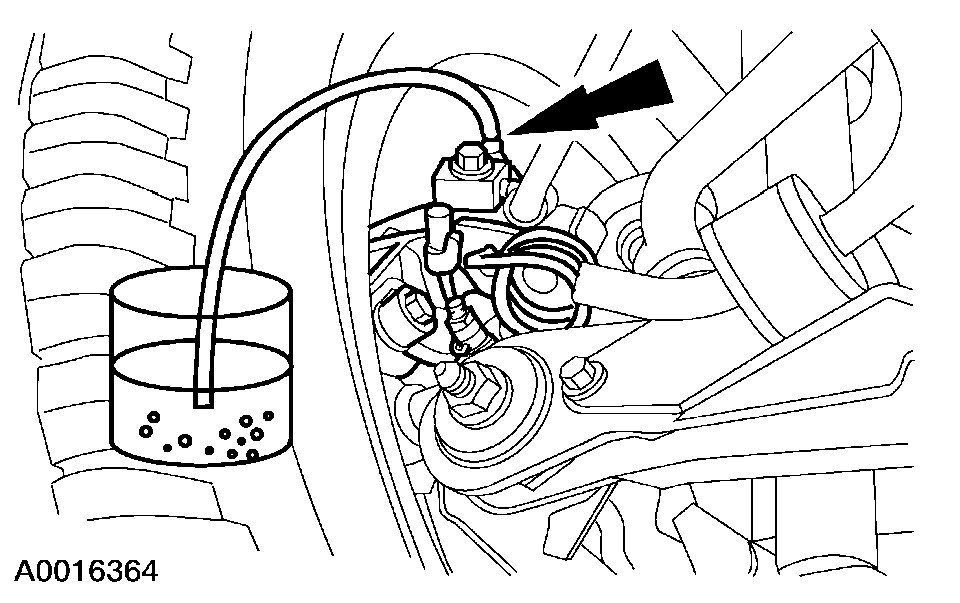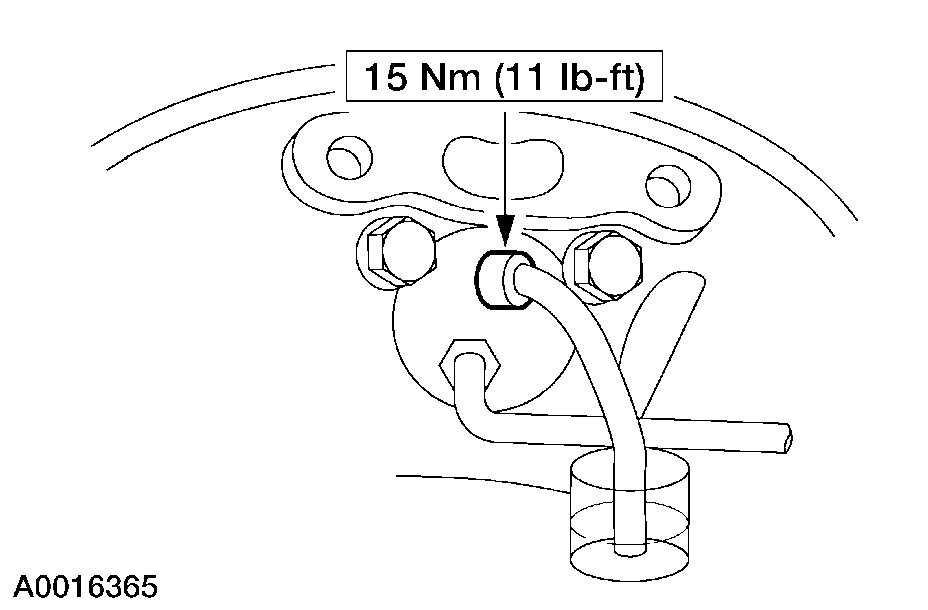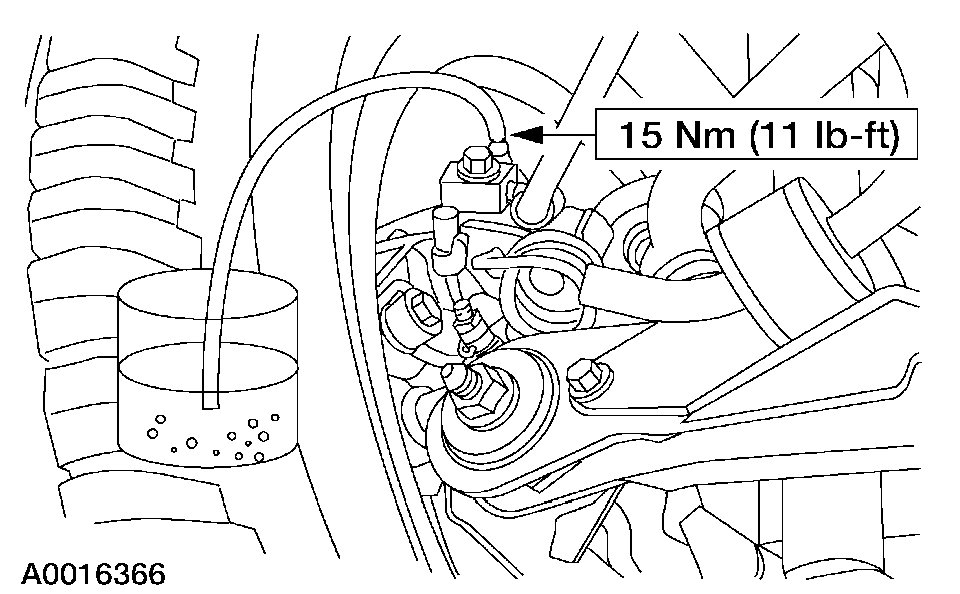Welcome to 2CarPros.
I am going to provide the directions for bleeding the entire system. See if it is what you have already done. Also, what you are describing sounds like a bad master cylinder, but I realize you just replaced it. Is it a new unit or re-manufactured?
Brake System Bleeding
Manual
WARNING: Use of any other than approved DOT 3 brake fluid will cause permanent damage to brake components and will render the brakes inoperative. Failure to follow these instructions may result in personal injury.
WARNING: Brake fluid contains polyglycol ethers and polyglycols. Avoid contact with eyes. Wash hands thoroughly after handling. If brake fluid contacts eyes, flush eyes with running water for 15 minutes. Get medical attention if irritation persists. If taken internally, drink water and induce vomiting. Get medical attention immediately. Failure to follow these instructions may result in personal injury.
CAUTION: Brake fluid is harmful to painted and plastic surfaces. If brake fluid is spilled onto a painted or plastic surface, immediately wash it with water.
CAUTION: Do not allow the brake master cylinder to run dry during the bleeding operation. Keep the brake master cylinder reservoir filled with the specified brake fluid. Never reuse the brake fluid that has been drained from the hydraulic system.
NOTE: When any part of the hydraulic system has been disconnected for repair or installation, air can get into the system and cause spongy brake pedal action. This requires bleeding of the hydraulic system after it has been correctly connected. The hydraulic system can be bled manually or with pressure bleeding equipment.
All vehicles
1. Clean the area then remove the brake master cylinder filler cap and fill the brake master cylinder reservoir with the specified brake fluid.
Vehicles with rear drum brakes
2. Place a box-end wrench on the RH rear bleeder screw. Attach a rubber drain tube to the RH rear bleeder screw and submerge the free end of the tube in a container partially filled with clean DOT 3 motor vehicle brake fluid.
Vehicles with rear disc brakes
3. Place a box-end wrench on the RH rear bleeder screw. Attach a rubber drain tube to the RH rear bleeder screw and submerge the free end of the tube in a container partially filled with clean brake fluid.
All vehicles
4. Have an assistant pump, and then hold firm pressure on, the brake pedal.
5. Loosen the RH rear bleeder screw until a stream of brake fluid comes out. While an assistant maintains pressure on the brake pedal, tighten the RH rear bleeder screw.
Repeat until clear, bubble-free fluid comes out.
Refill the brake master cylinder reservoir as necessary.
Vehicles with rear drum brakes
6. Tighten the RH rear bleeder screw.
Vehicles with rear disc brakes
7. Tighten the RH rear bleeder screw.
All vehicles
8. Repeat Steps 2 through 7 for the LH rear bleeder screw.
9. Place a box-end wrench on the RH front disc brake caliper bleeder screw. Attach a rubber drain tube to the RH front disc brake caliper bleeder screw, and submerge the free end of the tube in a container partially filled with clean brake fluid.
10. Have an assistant pump, and then hold firm pressure on, the brake pedal.
11. Loosen the RH front disc brake caliper bleeder screw until a stream of brake fluid comes out. While an assistant maintains pressure on the brake pedal, tighten the RH front disc brake caliper bleeder screw.
Repeat until clear, bubble-free fluid comes out.
Refill the brake master cylinder reservoir as necessary.
12. Tighten the RH front disc brake caliper bleeder screw.
13. Repeat Steps 9 through 12 for the LH front disc brake caliper bleeder screw.
Pressure
WARNING: Use of any other than approved DOT 3 brake fluid will cause permanent damage to brake components and will render the brakes inoperative. Failure to follow these instructions may result in personal injury.
WARNING: Brake fluid contains polyglycol ethers and polyglycols. Avoid contact with eyes. Wash hands thoroughly after handling. If brake fluid contacts eyes, flush eyes with running water for 15 minutes. Get medical attention if irritation persists. If taken internally, drink water and induce vomiting. Get medical attention immediately. Failure to follow these instructions may result in personal injury.
CAUTION: Brake fluid is harmful to painted and plastic surfaces. If brake fluid is spilled onto a painted or plastic surface, immediately wash it with water.
CAUTION: Do not allow the brake master cylinder to run dry during the bleeding operation. Keep the brake master cylinder reservoir filled with the specified brake fluid. Never reuse the brake fluid that has been drained from the hydraulic system.
All vehicles
1. Clean the area then remove the brake master cylinder filler cap and fill the brake master cylinder reservoir with the specified brake fluid.
2. NOTE: Master cylinder pressure bleeder adapter tools are available from various manufacturers of pressure bleeding equipment. Follow the instructions of the manufacturer when installing the adapter.
Install the bleeder adapter to the brake master cylinder reservoir, and attach the bleeder tank hose to the fitting on the adapter.
Vehicles with rear drum brakes
3. NOTE: Bleed the longest line first. Make sure the bleeder tank contains enough specified brake fluid to complete the bleeding operation.
Place a box-end wrench on the RH rear bleeder screw. Attach a rubber drain tube to the RH rear bleeder screw, and submerge the free end of the tube in a container partially filled with clean brake fluid.
Vehicles with rear disc brakes
4. Place a box-end wrench on the RH rear bleeder screw. Attach a rubber drain tube to the RH rear bleeder screw, and submerge the free end of the tube in a container partially filled with clean brake fluid.
All vehicles
5. Open the valve on the bleeder tank.
Vehicles with rear drum brakes
6. Loosen the RH rear bleeder screw. Leave open until clear, bubble-free brake fluid flows, then tighten the RH rear bleeder screw and remove the rubber hose.
Vehicles with rear disc brakes
7. Loosen the RH rear bleeder screw. Leave open until clear, bubble-free brake fluid flows, then tighten the RH rear bleeder screw and remove the rubber hose.
8. Continue bleeding the rest of the system, going in order from the LH rear bleeder screw to the RH front disc brake caliper bleeder screw, ending with the LH front disc brake caliper bleeder screw.
9. Close the bleeder tank valve. Remove the tank hose from the adapter, and remove the adapter.
Check out the diagrams (Below). Please let us know what happens.
Images (Click to make bigger)
Monday, April 5th, 2021 AT 12:24 PM
